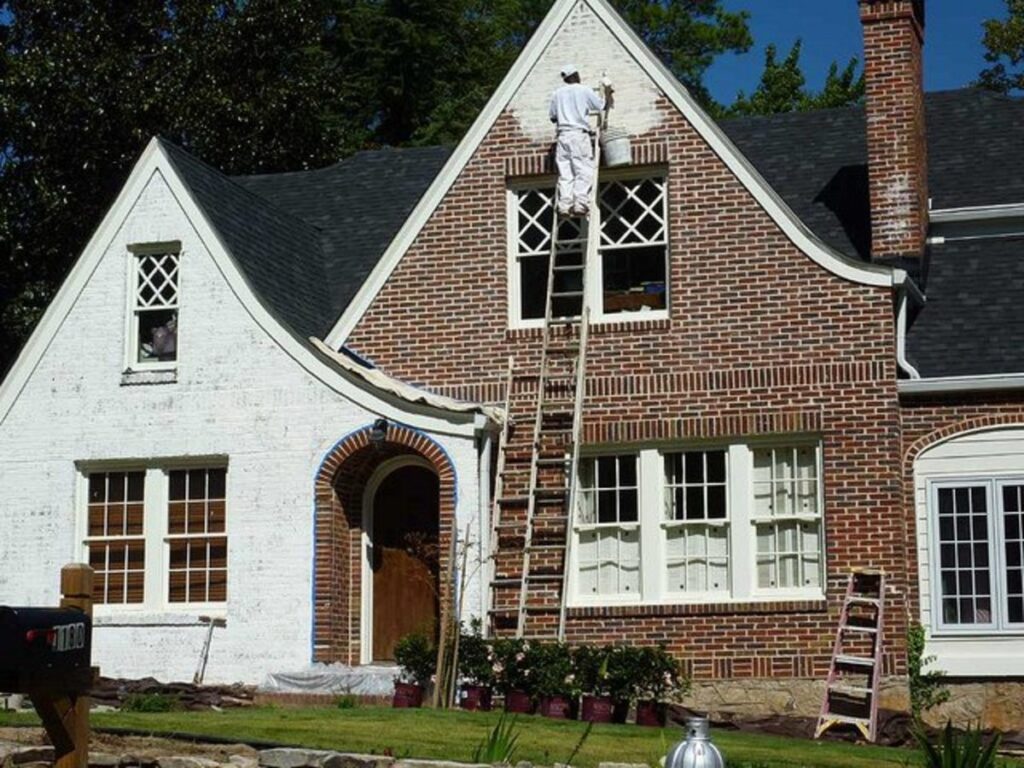Painting Home Exterior
It Feels Like Home!

Revitalize Your Home: Tips For Painting Home Exterior
Giving the exterior of your home a fresh coat of paint is an excellent way to enhance its curb appeal, protect it from the elements, and increase its value. Whether you’re planning a complete color transformation or simply refreshing the existing paint, proper preparation and execution are key to achieving professional-looking results. Here’s everything you need to know to tackle the task of painting home exterior of your house like a pro.
Assess the Condition of Your Exterior:
- Inspect the exterior surfaces of your home for signs of damage, such as cracks, peeling paint, mold, or mildew.
- Check for areas of rot or decay in wood siding, trim, or fascia boards that may require repair or replacement before painting.
Choose the Right Paint and Color:
- Select high-quality exterior paint specifically formulated for the surface material of your home, whether it’s wood, stucco, brick, or vinyl.
- Consider factors such as climate, sun exposure, and architectural style when choosing paint colors to complement your home’s aesthetic and surroundings.
Gather the Necessary Tools and Supplies:
- Essential tools for exterior painting include brushes, rollers, paint trays, drop cloths, masking tape, paint sprayers (if applicable), and ladders or scaffolding for reaching high areas safely.
Prepare the Surface:
- Clean the exterior surfaces thoroughly using a pressure washer or hose with a scrub brush to remove dirt, grime, and loose paint.
- Scrape off any peeling or flaking paint, sand rough areas, and fill cracks or holes with an appropriate exterior filler or caulk.
- Protect windows, doors, trim, and other adjacent surfaces with masking tape and drop cloths to prevent overspray and drips.
Prime the Surface:
- Apply a primer coat to bare wood, metal, or masonry surfaces to promote adhesion, seal porous areas, and ensure uniform coverage of the topcoat.
- Use a primer specifically designed for exterior use and compatible with the type of paint you’ll be applying.
Apply the Paint:
- Start by painting the trim, eaves, and other details using a smaller brush, then move on to larger surfaces with a roller or paint sprayer for faster coverage.
- Work in manageable sections, applying paint evenly and overlapping each stroke slightly to avoid lap marks and ensure uniform color.
- Allow the first coat to dry completely before applying additional coats as needed for full coverage and color depth.
Maintain and Protect Your Paint Job:
- Regularly inspect the exterior of your home for signs of damage or wear and touch up any areas as needed to maintain the integrity of the paint.
- Clean the painted surfaces periodically with a mild detergent and water to remove dirt, dust, and pollutants that can dull the finish over time.
With proper preparation, the right tools and materials, and careful attention to detail, painting the exterior of your home can be a rewarding DIY project that enhances its beauty and longevity. By following these expert tips and techniques, you can achieve professional-quality results, painting home exteroir will transform your home into a stunning showcase of curb appeal. So roll up your sleeves, unleash your creativity, and breathe new life into your home with a fresh coat of paint.
